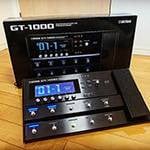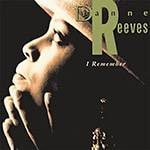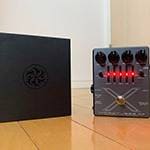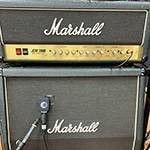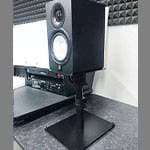Guitar has a variety of playing techniques. Among them, the “slide technique” is one with a unique tone and expressive power.
And, the tool that supports this slide technique is an accessory called a “slide bar” or “bottleneck”.
Unlike the usual method of pressing the strings with your fingers, using a slide bar allows you to create smooth pitch changes and bluesy swells that’s almost like the human voice.
In this article, I will introduce the different types of slide bars, tips for playing techniques, and even some famous players known for using slide bars.
What Is the Slide Bar?
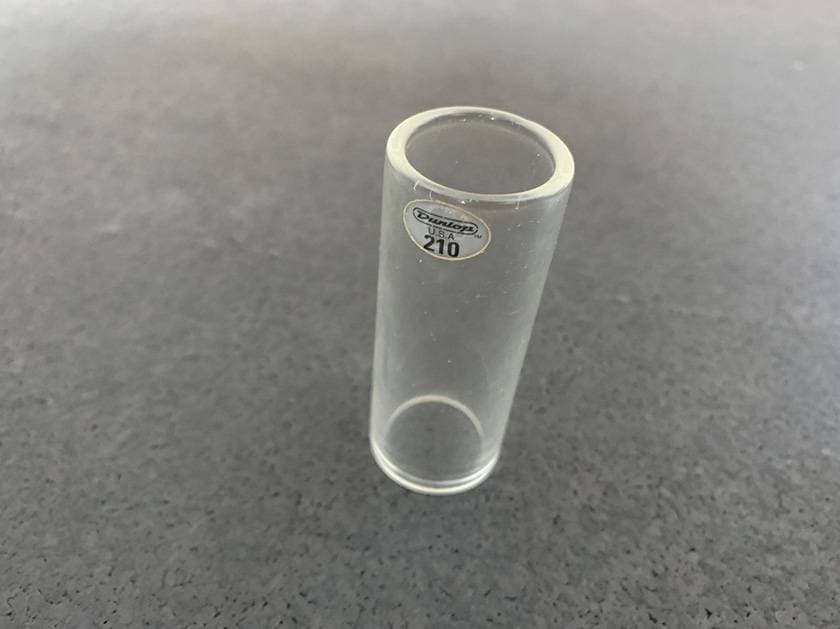
A slide bar is a cylindrical tool made of metal, glass, ceramic, or other materials that glides over the strings while producing sound and is worn on one of the left hand fingers.
In standard guitar playing, pitch is determined by pressing the strings down on the frets, but in slide technique, pitch is created by pressing the strings directly with the slide bar.
This allows for smooth and free transitions between notes, making it possible to play phrases that sound almost like singing.
Slide bars are frequently used in music such as blues and country, and they have also been incorporated into rock and pop.
Types and Characteristics of Slide Bars
There are several types of slide bars, and their sound and playability vary depending on the material and size. Here are three representative types.
1. Glass
Originating from clear glass or the neck of a wine bottle, they are also known as “bottlenecks”.
The tone is soft and warm, making them suitable for blues and country.
They are lightweight, so even beginners can handle them.
However, a drawback is that they can break if dropped.
I personally use a glass type of slide bar.
JIM DUNLOP / 210 PYREX GLASS SLIDE MEDIUM/MEDIUM
2. Metal
Most are made from stainless steel or brass, and they have more weight compared to glass types.
The tone is powerful and sharp-edged, making them suitable for rock and more difficult playing styles.
They also offer long sustain and pair excellently with distorted sounds.
Rock guitarists like Duane Allman and Johnny Winter were known to use them.
JIM DUNLOP / CHROMED STEEL SLIDE MEDIUM
3. Ceramic
Made from fired ceramic material.
The tone has characteristics between glass and metal, combining both softness and power.
With its unique texture, it’s popular among players seeking a distinctive sound.
JIM DUNLOP / 243 MOONSHINE CERAMIC SLIDE MEDIUM
Which Finger Are You Supposed to Wear It On?
The finger on which you wear the slide bar varies by player, but generally, most people wear it on either the ring finger or the pinky finger.
- ● When Worn on the Ring Finger
- It offers good stability and makes sliding easier. Since the remaining fingers (index, middle, and pinky) can still be used to some extent, it’s possible to play regular chords as well.
I like to wear it on my ring finger. - ● When Worn on the Pinky Finger
- It is easy to use in combination with chord playing and you have a lot of freedom with it.
It’s difficult to maintain balance until accustomed, but it is a method preferred by advanced players.
Eric Johnson uses his pinky finger.
Note: There are players who use their middle or index fingers, but this style is suited for playing slide exclusively.
Paul Gilbert, a guitarist I like who has recently been into slide guitar, plays the slide bar using his middle finger.
Basics and Tips on Playing Technique
Slide technique has unique tips. At first, the pitch tends to be unstable, but by focusing on key points, you will gradually be able to control it.
1. Place It Directly Above the Fret
In normal playing, you press down just before the fret, but in slide playing, placing the bar directly above the fret results in accurate pitch.
It is important to fine-tune by relying on your ear.
2. Don’t Press the Strings Too Hard
It’s okay if the slide bar lightly touches the strings. Pressing too hard will cause the sound to become muffled or produce unwanted buzzing. Focus on moving it smoothly.
Placing your thumb on the back of the neck as a pivot helps with stability.
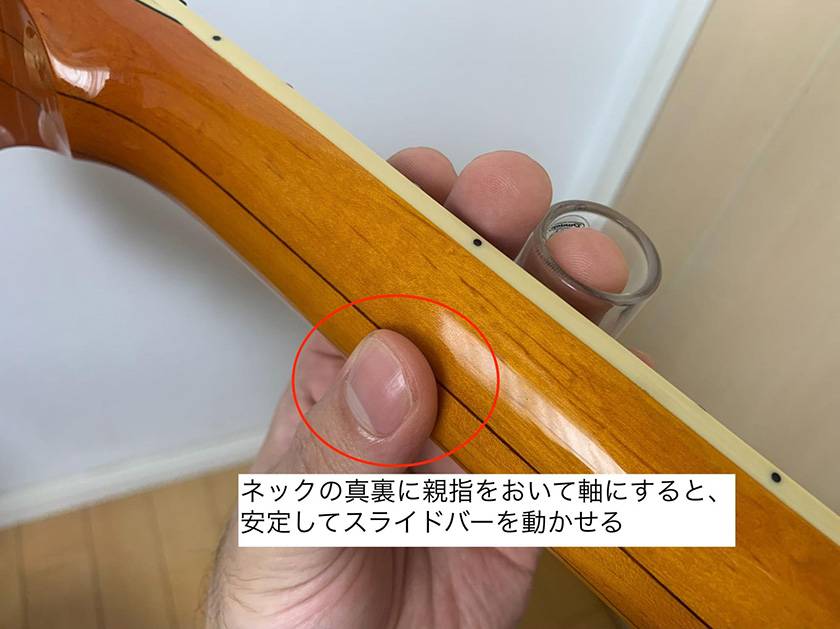
3. Muting Unwanted Strings
Using a slide often causes sympathetic vibrations, making unwanted string sounds easier to occur, so it’s important to mute firmly with the palm of the right hand or fingers of the left hand.
Being able to do this will make the sound significantly clearer.
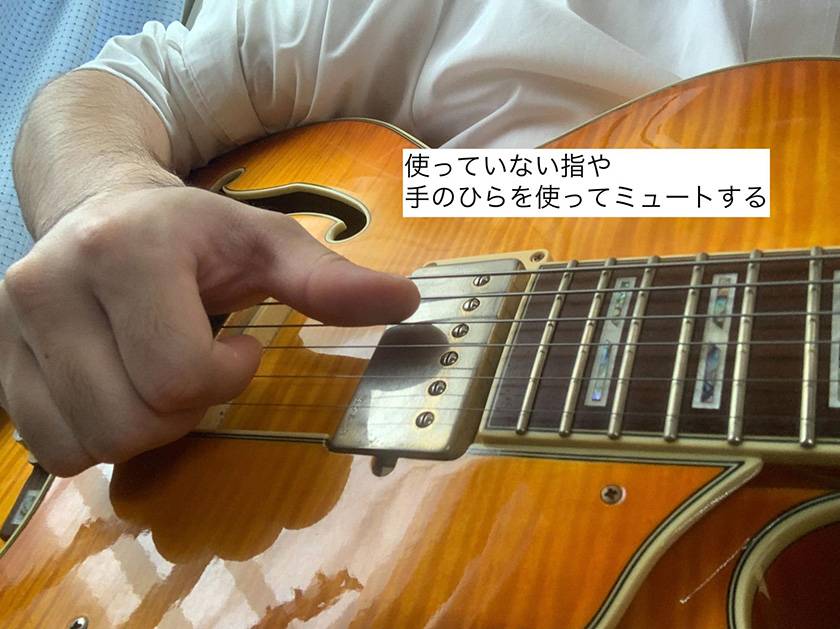
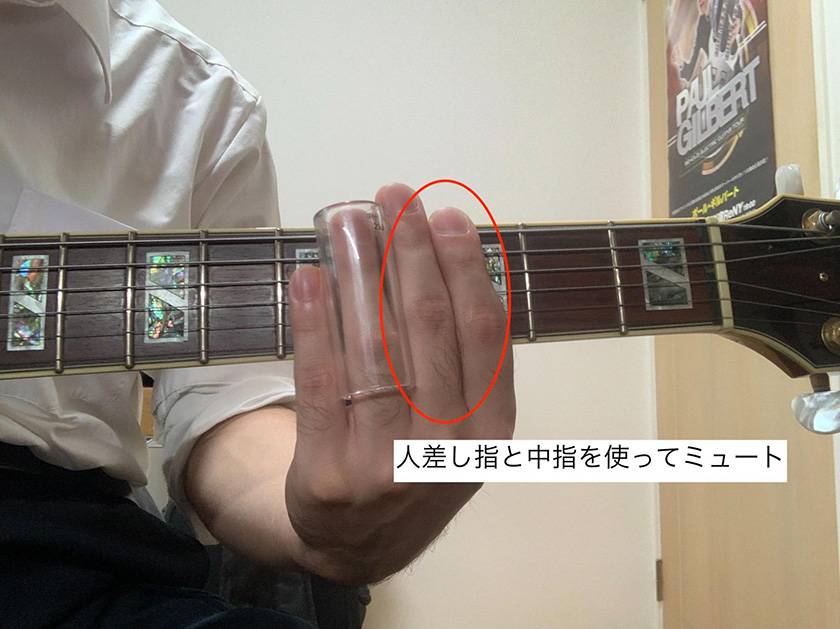
4. Utilize Open Tuning
Open tunings such as Open E, Open D, and Open G are often used in slide guitar.
Since the open strings produce a chord, you can create harmonies simply by sliding the bar horizontally.
This is recommended because even beginners can easily enjoy a bluesy sound.
5. Playing with Fingers
While using a pick is acceptable in slide playing, plucking the strings with your fingers allows for more delicate control of nuance.
Additionally, fingerpicking naturally mutes unwanted strings more easily, making it easier to achieve a clear and cohesive sound, which is a major advantage.
Many blues and country slide players prefer fingerpicking, and it is highly recommended for those who want to enhance their sound expression.
Guitar Setup Suitable for Slide Playing
Playing with a slide bar requires a different approach than normal picking or chord playing.
Therefore, simply adjusting the guitar setup a little can dramatically improve playability and sound quality.
Here, I’m going to introduce some representative points.
1. Raise the String Height (Action) Slightly
In slide playing, since the bar lightly touches the strings to produce sound, if the string height is set too low, it is easy for the frets to cause buzzing sounds.
To prevent this, it is common to set the string height just a little higher.
For those who find it troublesome to raise the string height only for slide playing, there is a method of temporarily increasing the string height by placing a piece of thick paper near the 1st fret. Guthrie Govan introduced this technique.
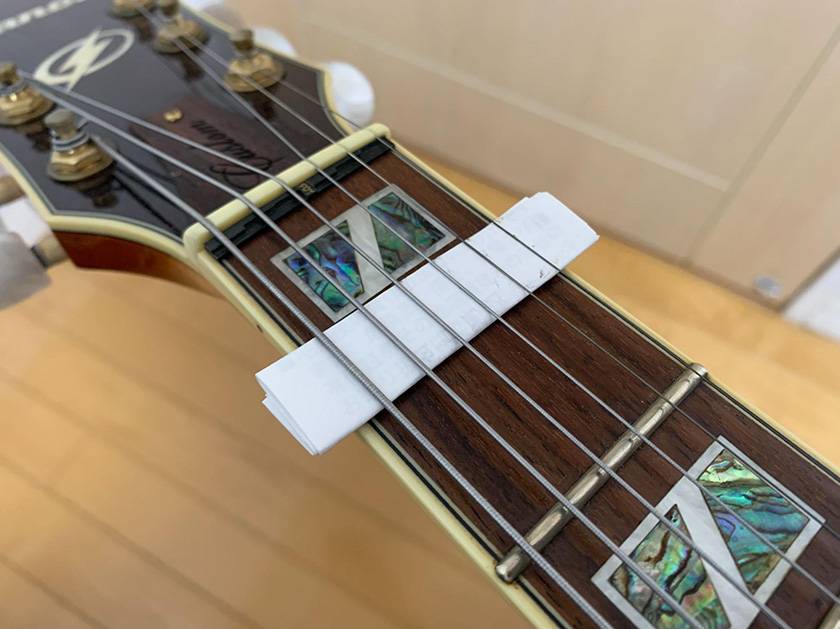
2. Use Thicker Strings
In slide playing, it is necessary to sound the strings firmly, so with thin strings, the pitch can become unstable and the sound may lack body.
Choosing slightly thicker gauges, such as 11–52 or 12–54, makes it easier to control and helps it sustain longer.
3. Pickup Selection
The character of the sound changes greatly depending on the choice of pickup in slide playing.
- ● Neck Pickup
- Since it produces a soft, thick warm tone, this position is most commonly used for slide technique. It is ideal when you want to create a bluesy, singing-like sound.
- ● Bridge Pickup
- A sharp, crisp tone. It is suited for rock-oriented slide playing or aggressive styles.
Famous Players Who Use Slide Bars
When talking about the charm of slide guitar, famous players are indispensable. By listening to their playing, you can understand the possibilities of slide technique.
- ● Duane Allman
- Guitarist of The Allman Brothers Band. His powerful metal slide technique and fusion of blues and rock are legendary.
- ● Derek Trucks
- A representative slide guitarist of the modern era. He wears a glass slide on his ring finger and plays freely singing-like phrases in open E tuning. He is a figure who conveys the charm of slide to the younger generation.
- ● Johnny Winter
- Expressed hard blues rock with the slide bar and gained popularity with powerful live performances. By combining a metal slide with distorted tones, he created an aggressive and passionate sound.
To Summarize
The slide bar is a simple item, but depending on how it is used, it greatly expands the expressive power of the guitar.
The tone changes depending on the material such as glass or metal, and the style also changes greatly depending on the finger worn and the tuning.
At first, matching the pitch may feel difficult, but with the correct form and ear training, you will soon be able to enjoy a bluesy, singing-like sound.
Take a look at the performances of famous players, find a slide bar that suits you, and be sure to pursue your own unique expression.
Slide technique is often thought to be difficult, but its charm is that even simple phrases can create plenty of atmosphere.
Even those who have never tried slide playing before can open a new door to music by picking up a single slide bar.
The “sound & person” column is made up of contributions from you.
For details about contributing, click here.





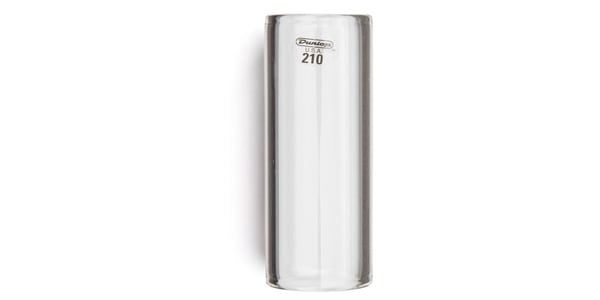
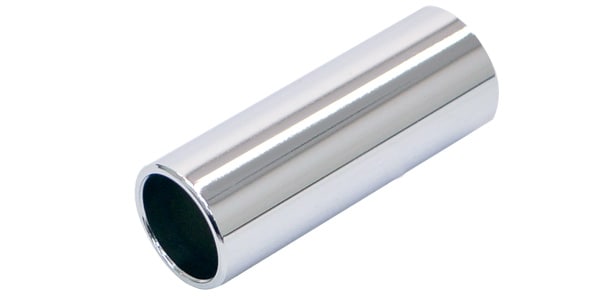
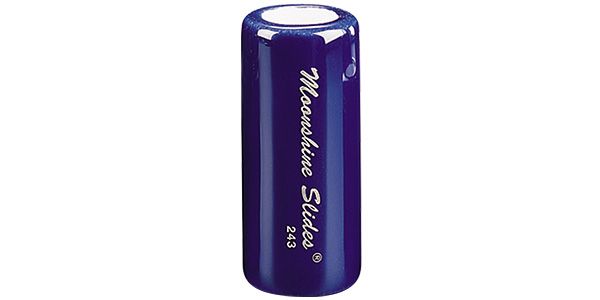





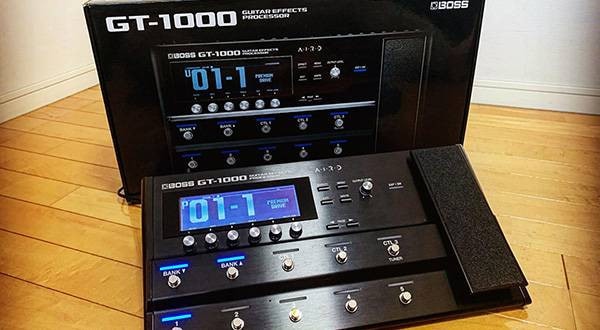
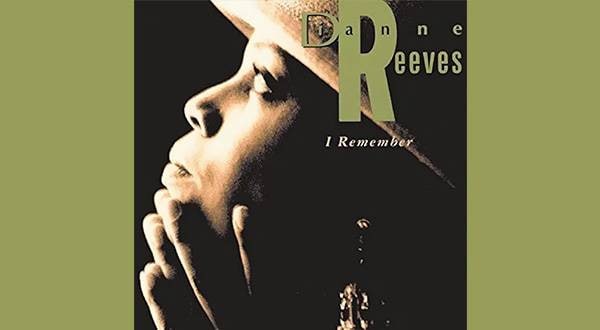
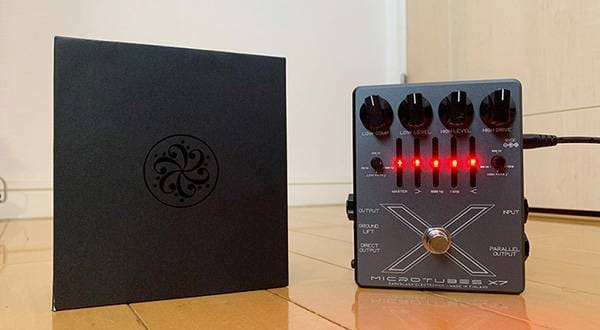

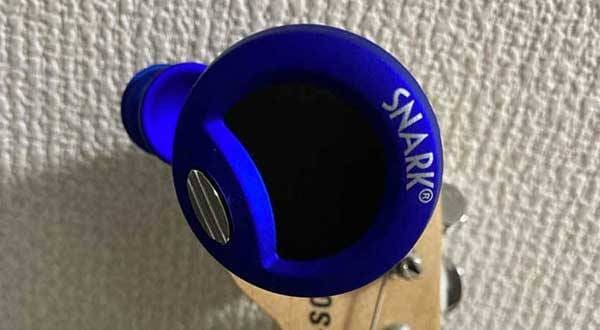
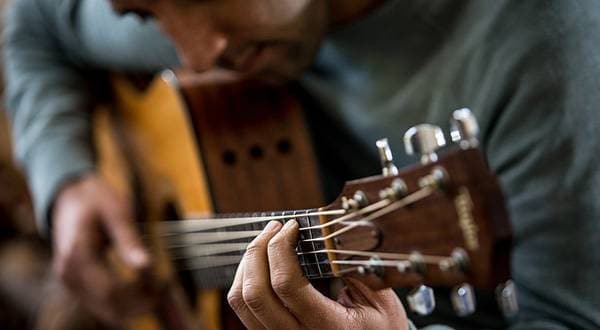
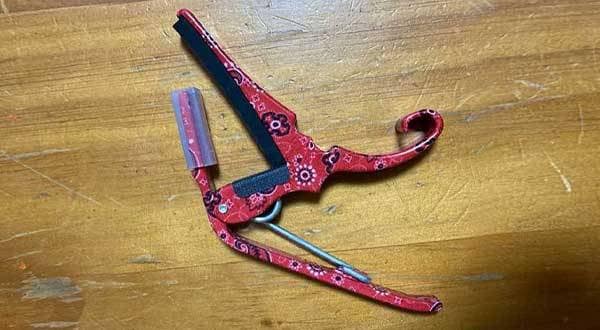


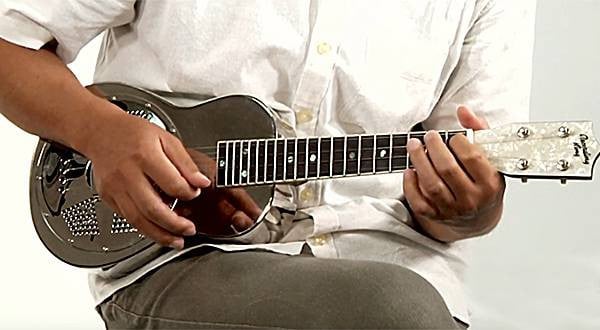
 ギターパーツの沼
ギターパーツの沼
 【初心者向け】エフェクター講座
【初心者向け】エフェクター講座
 ギター初心者ゼミ
ギター初心者ゼミ
 オクターブチューニングの方法
オクターブチューニングの方法
 ギターのお手入れ
ギターのお手入れ
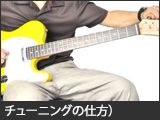 音を合わせる(チューニングの方法)
音を合わせる(チューニングの方法)

